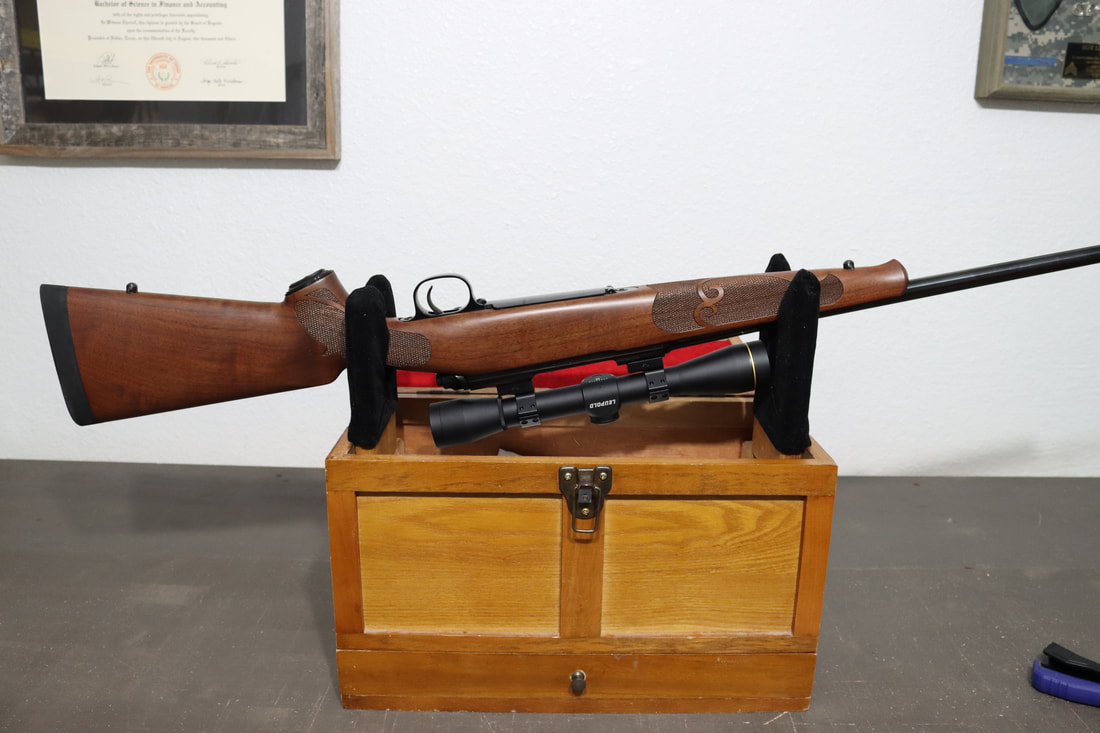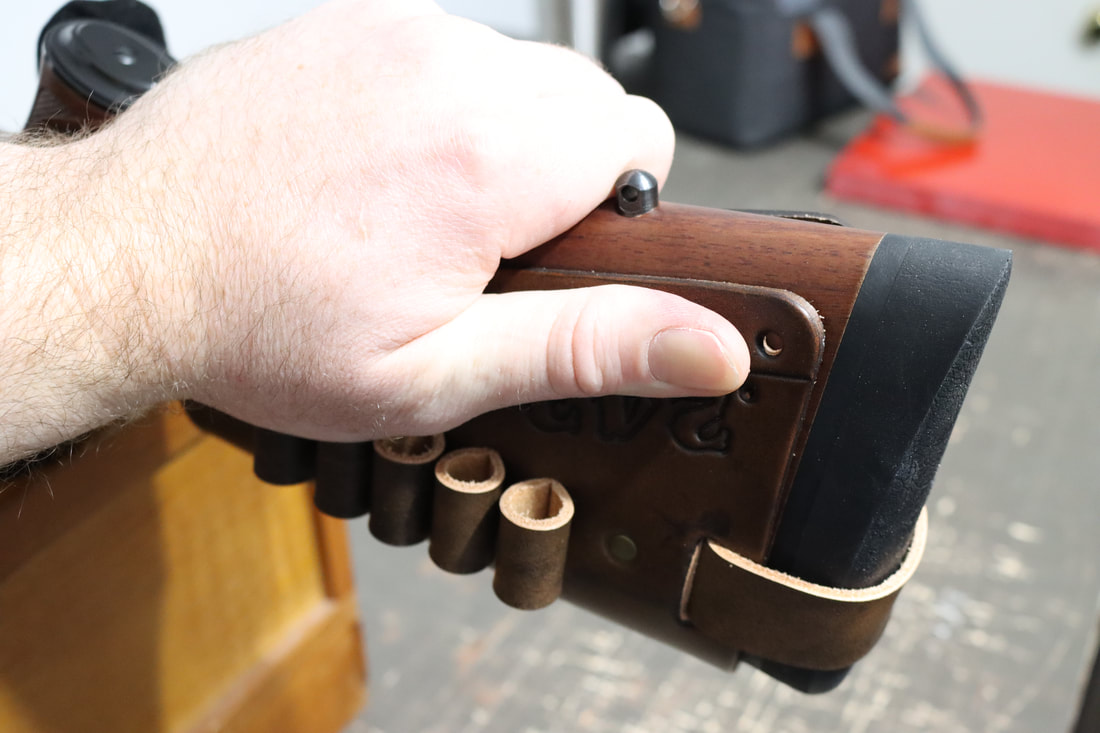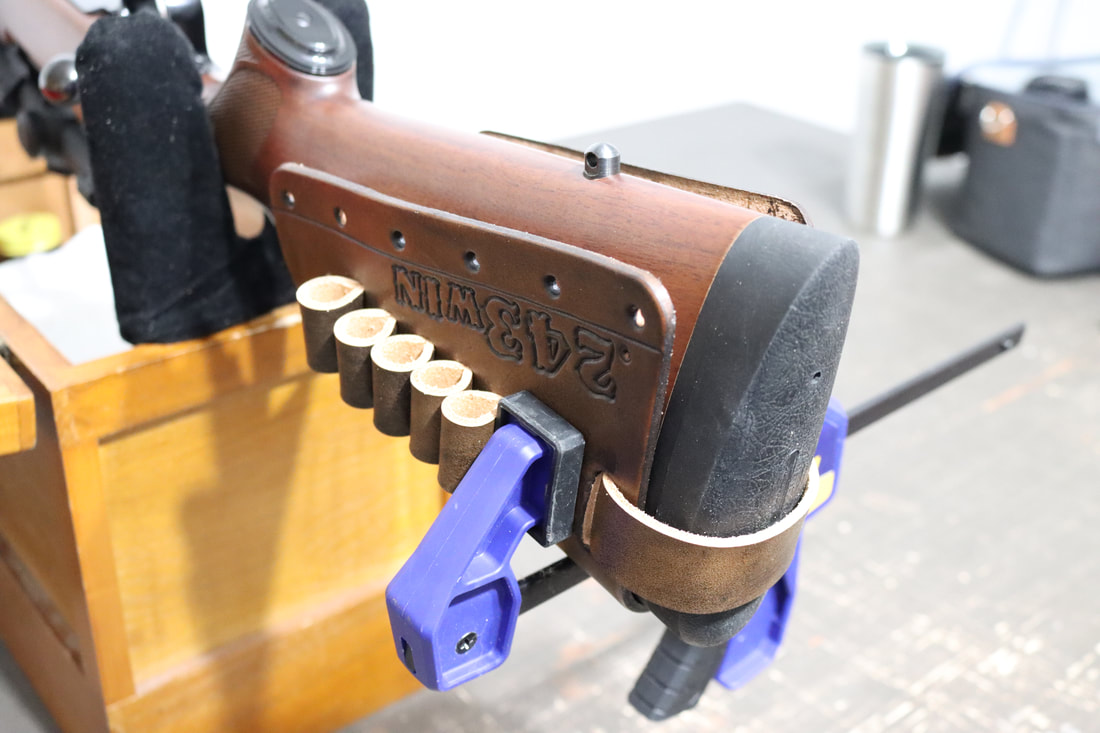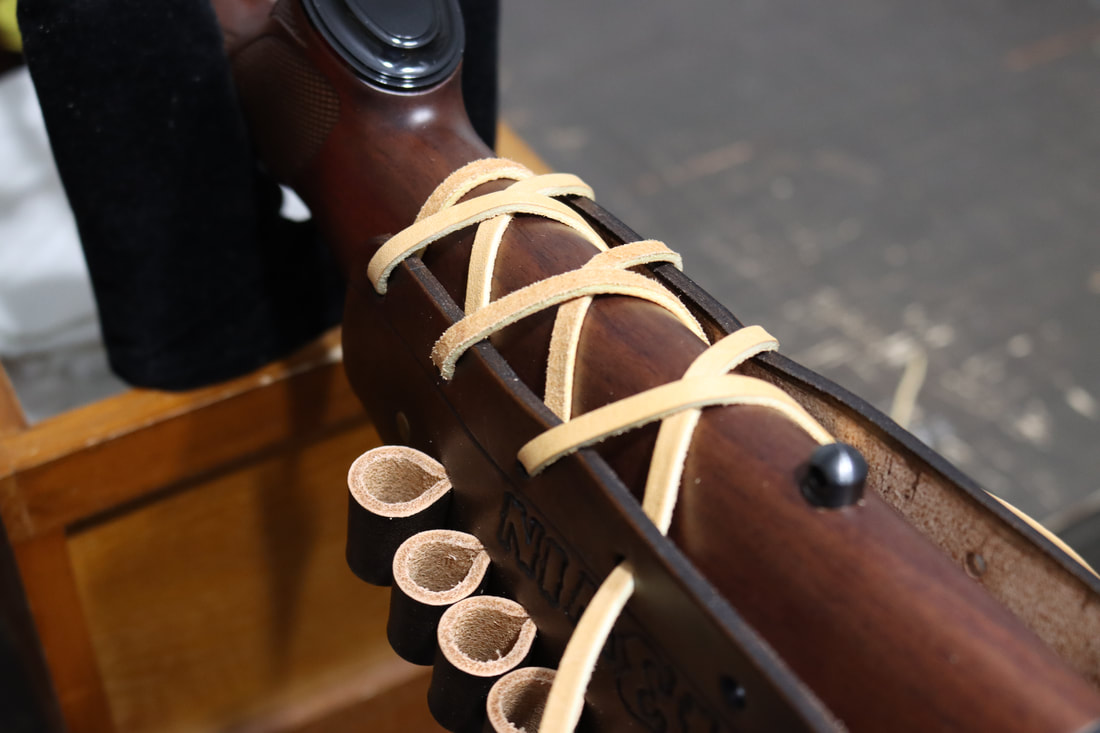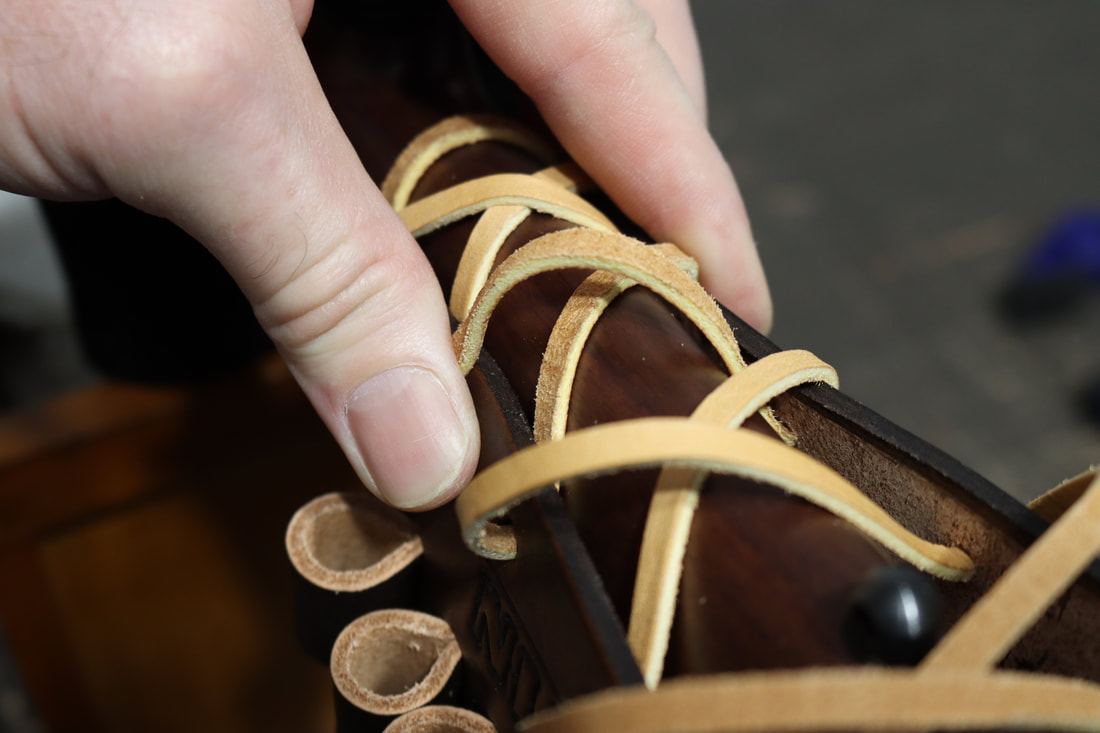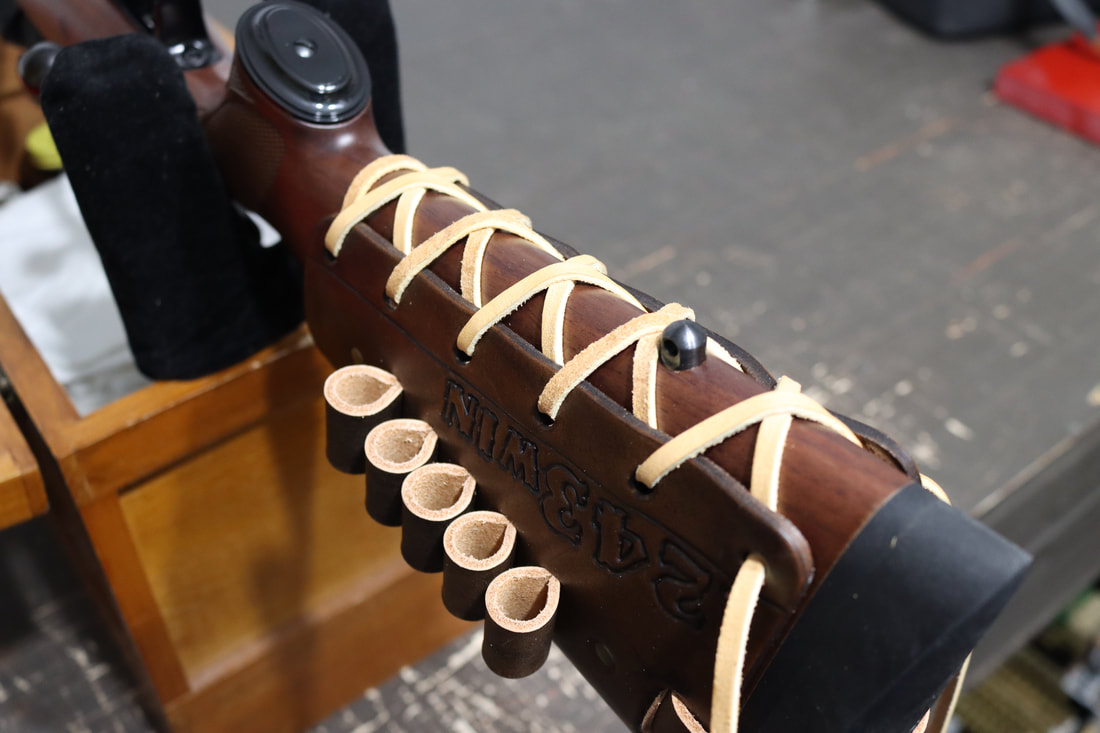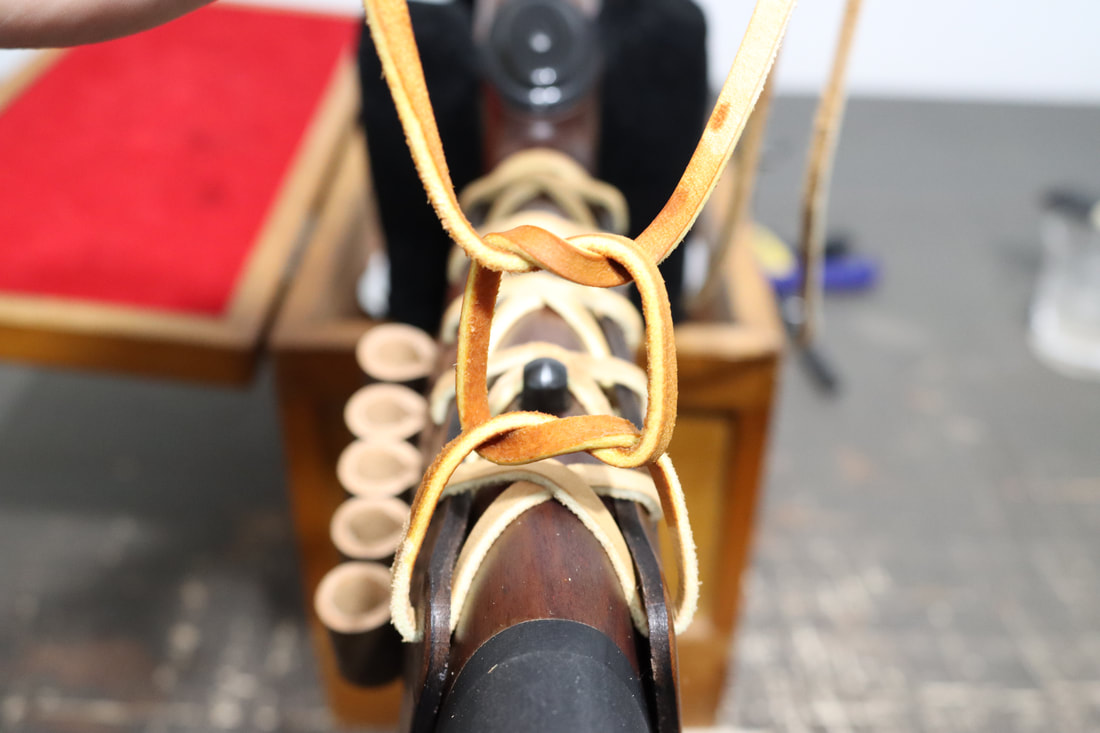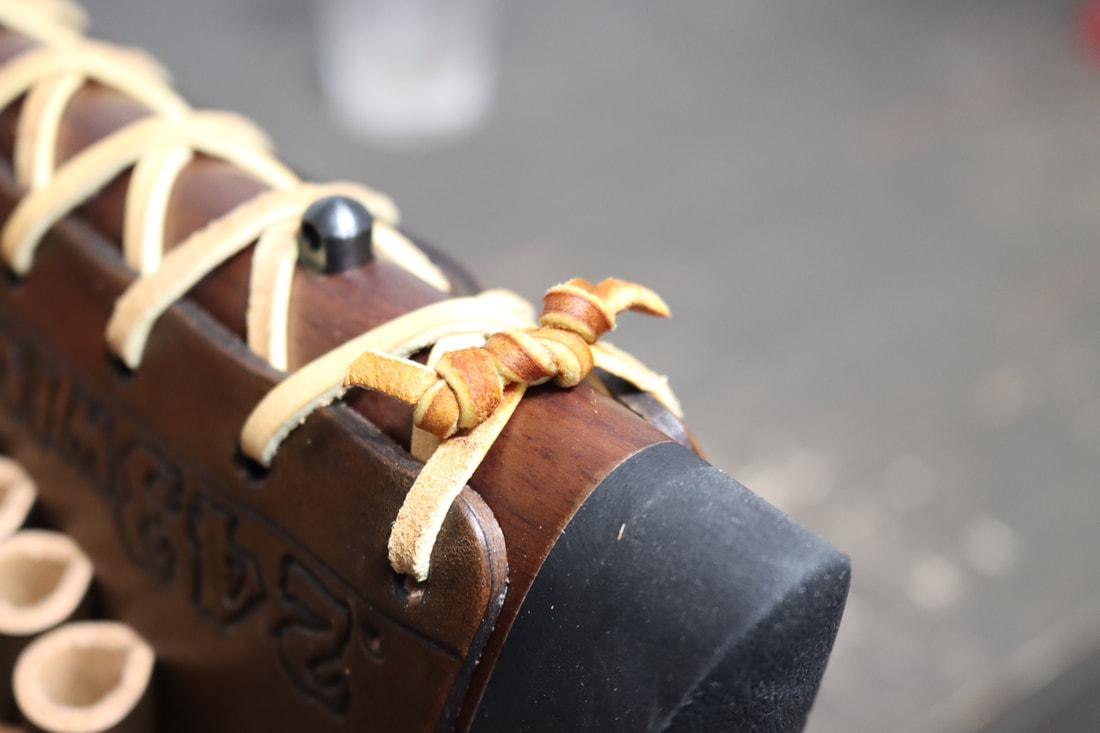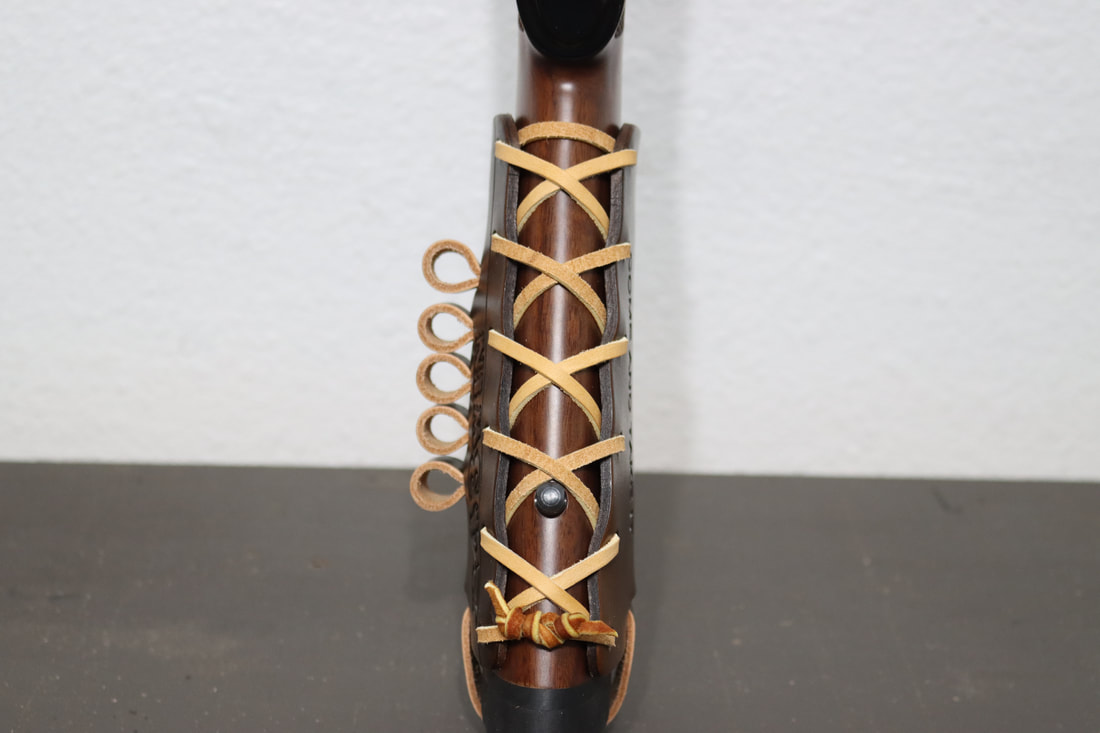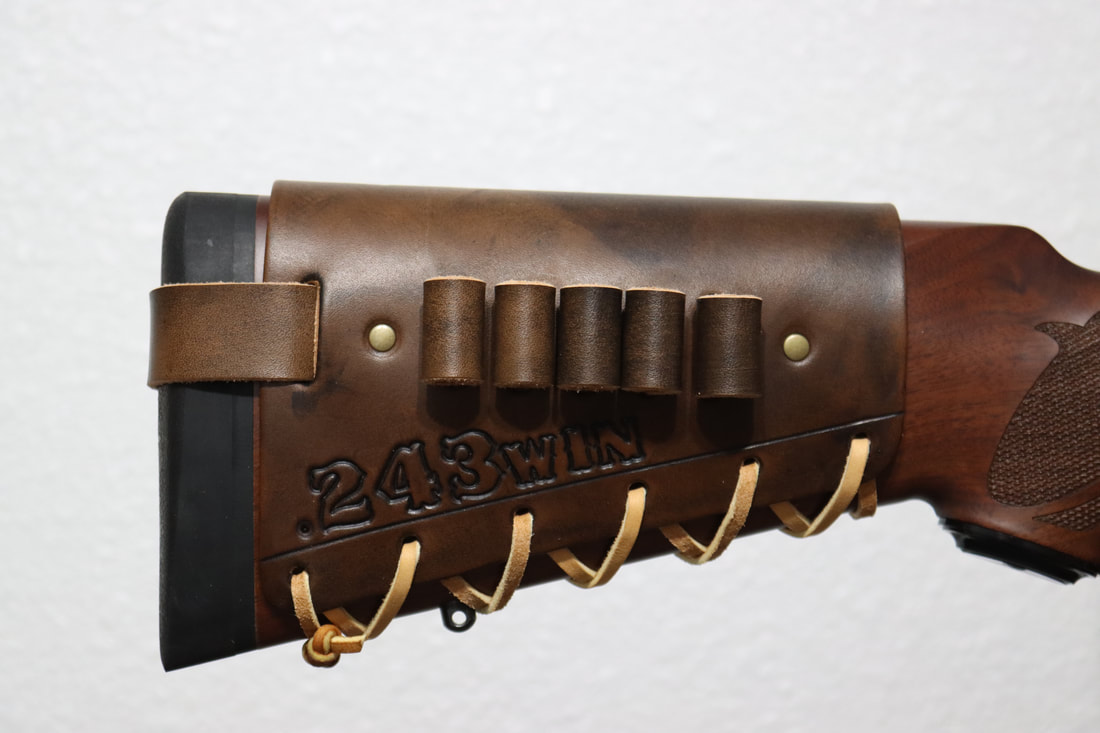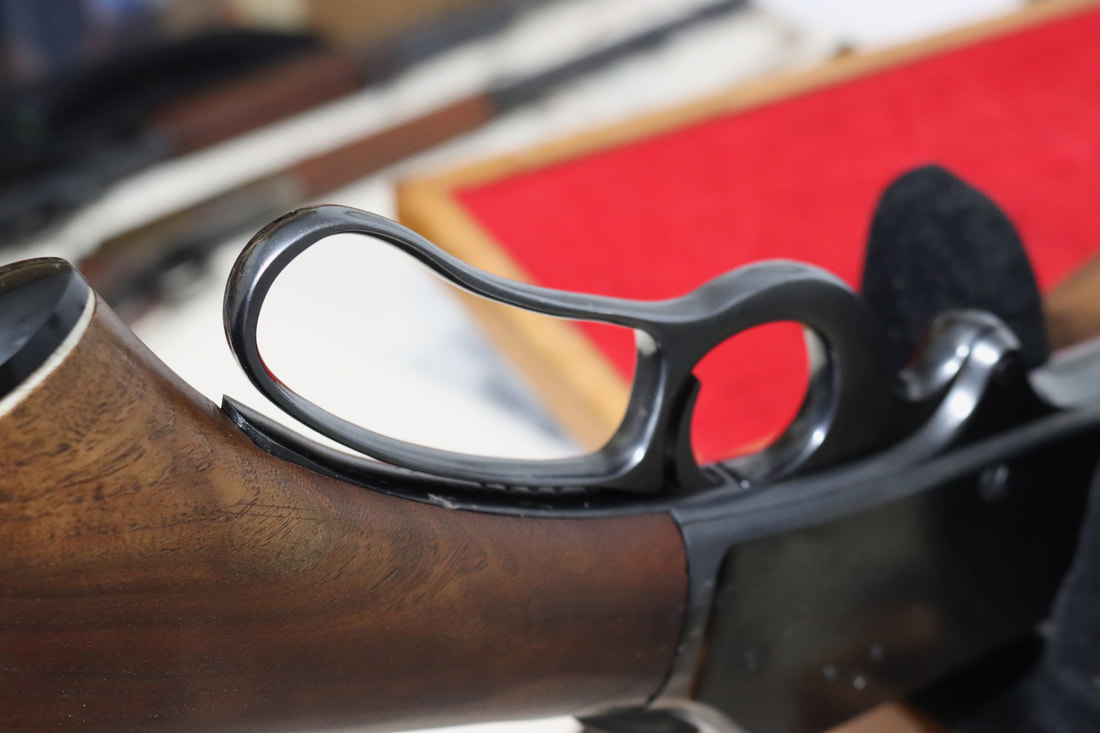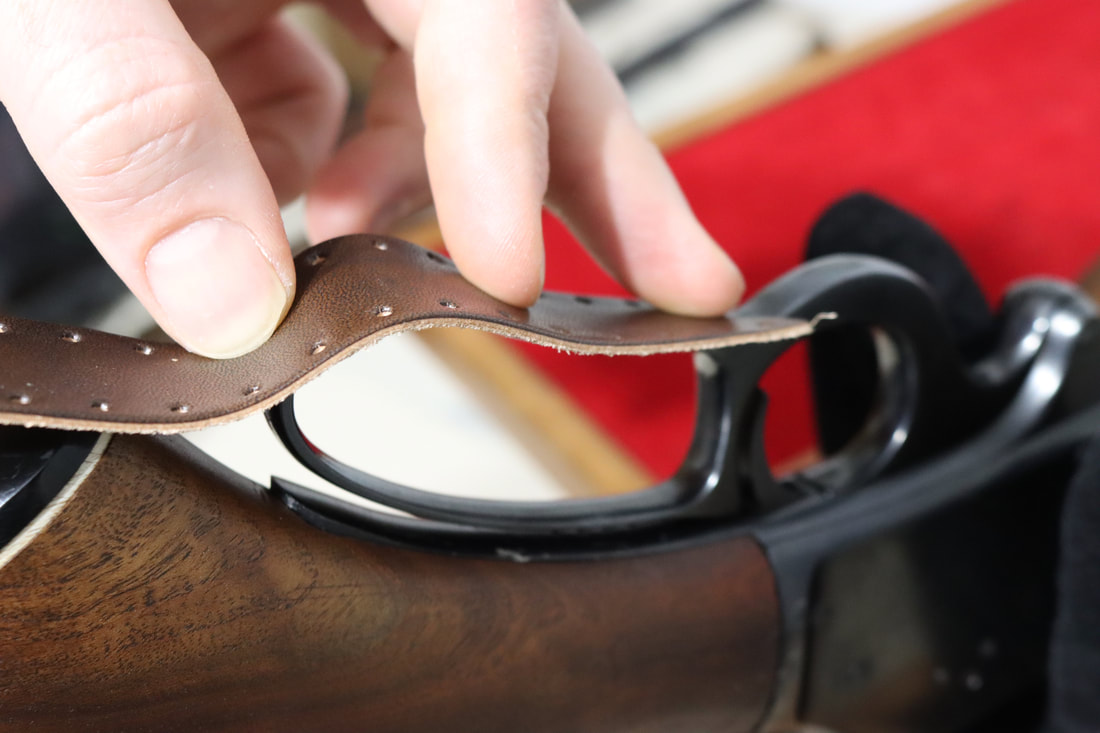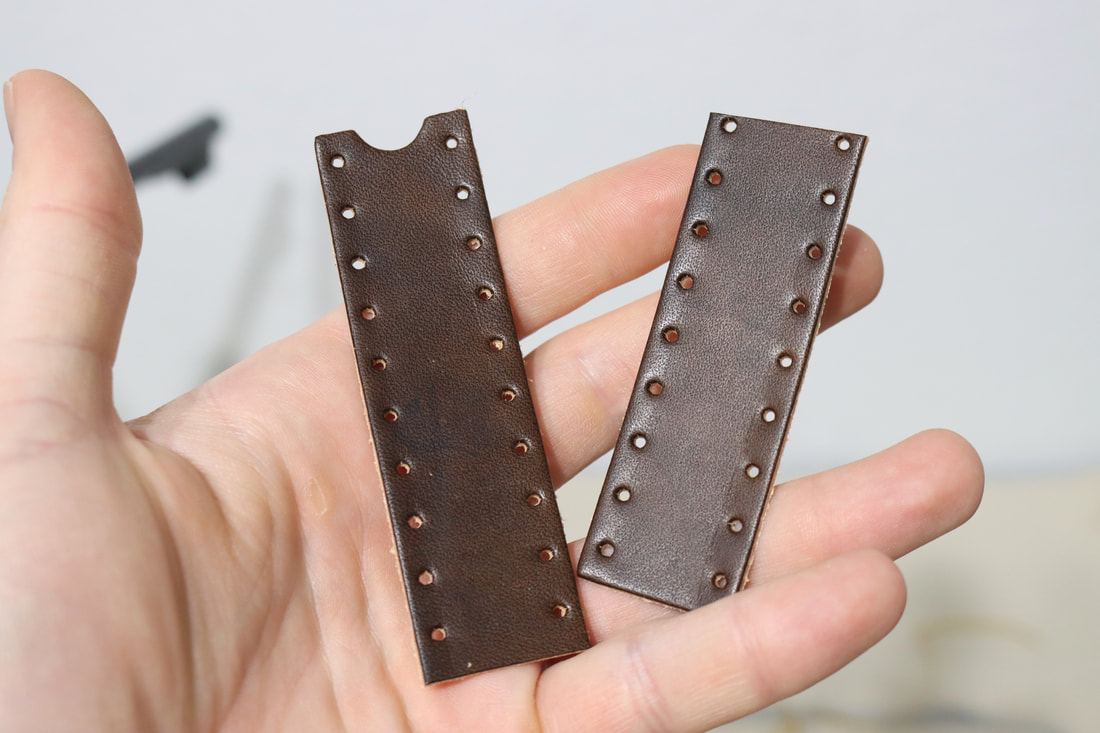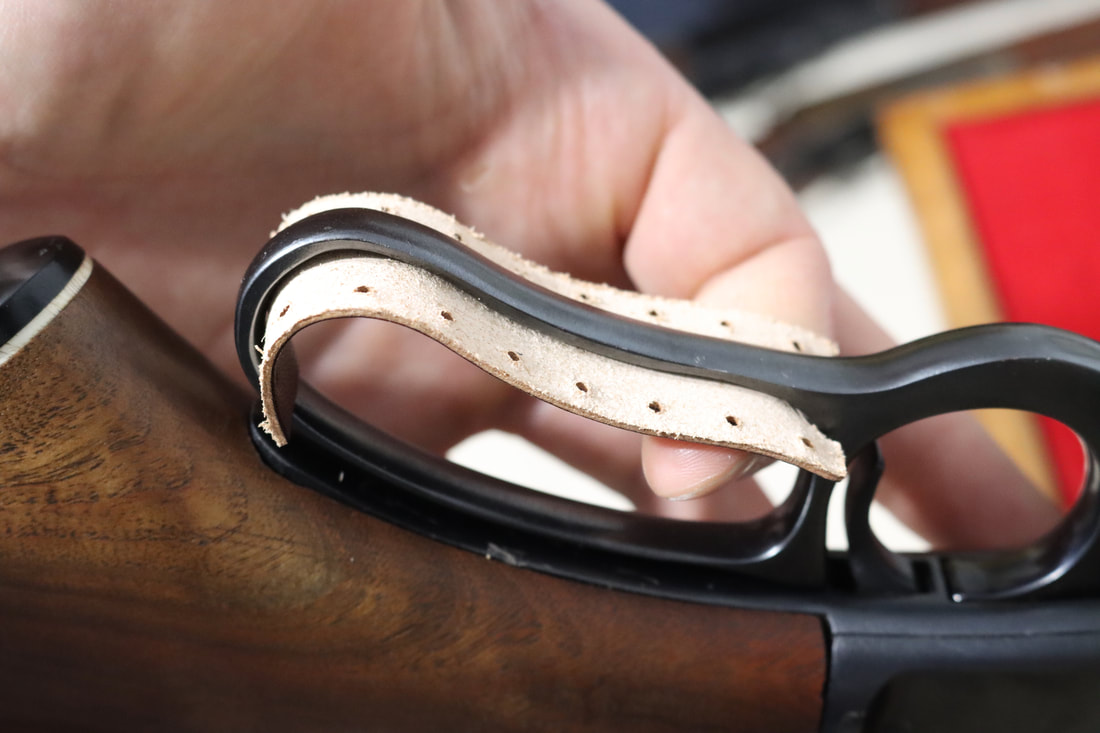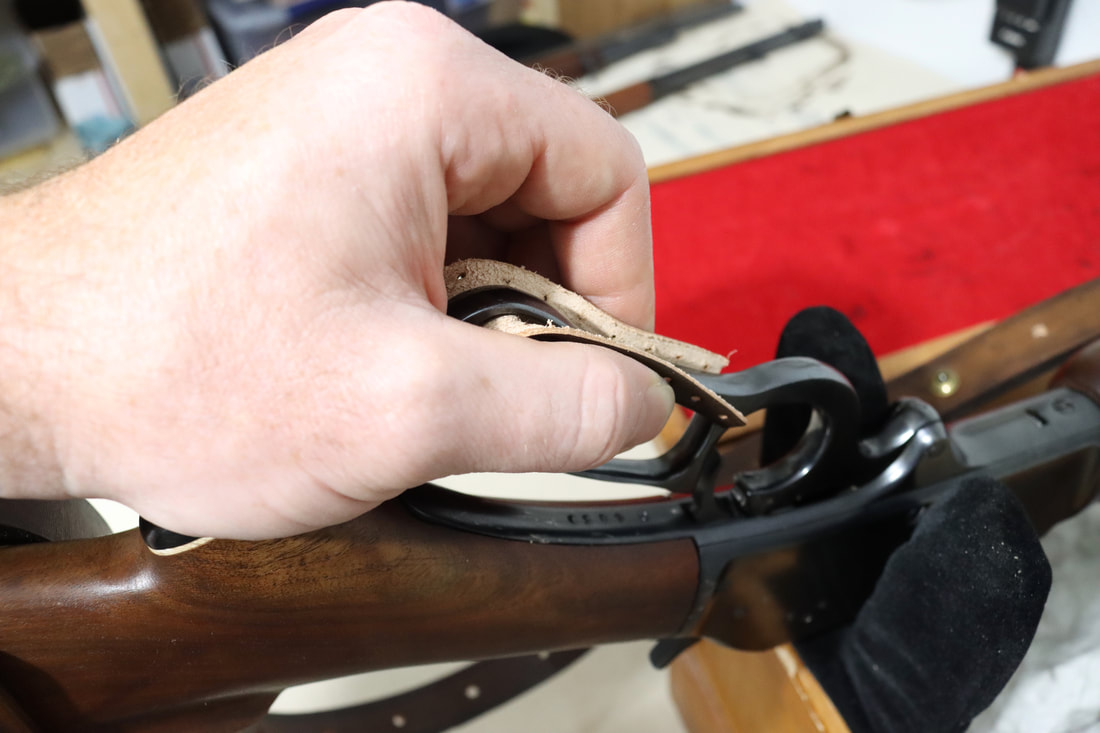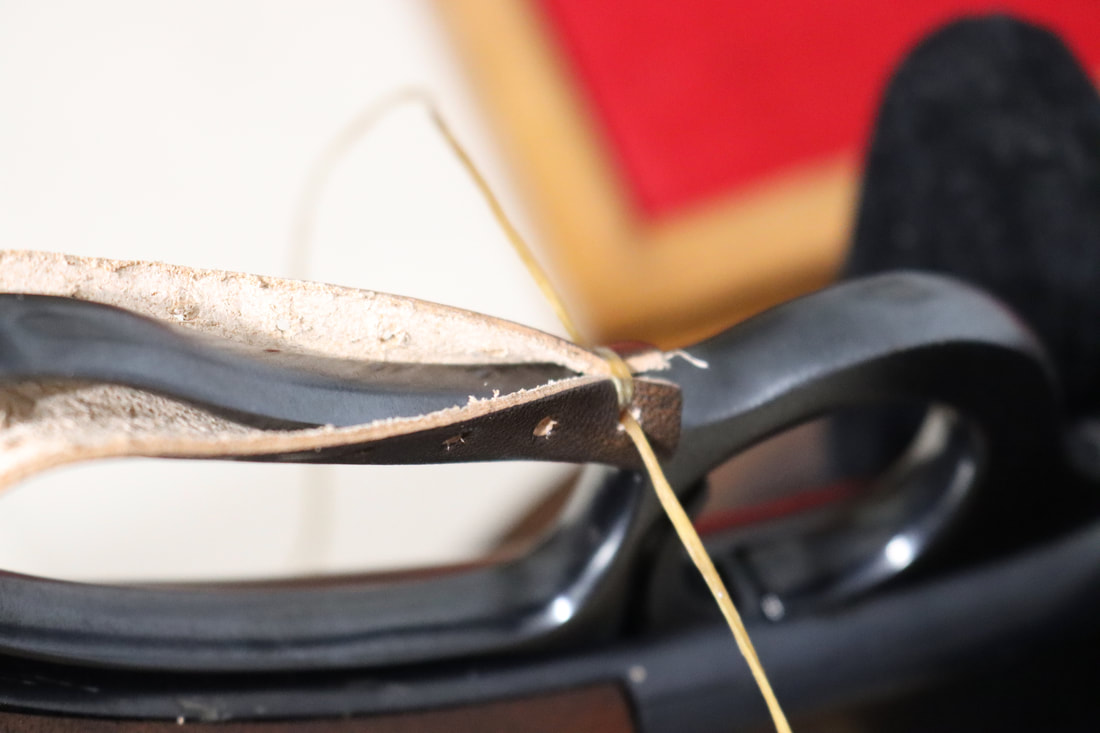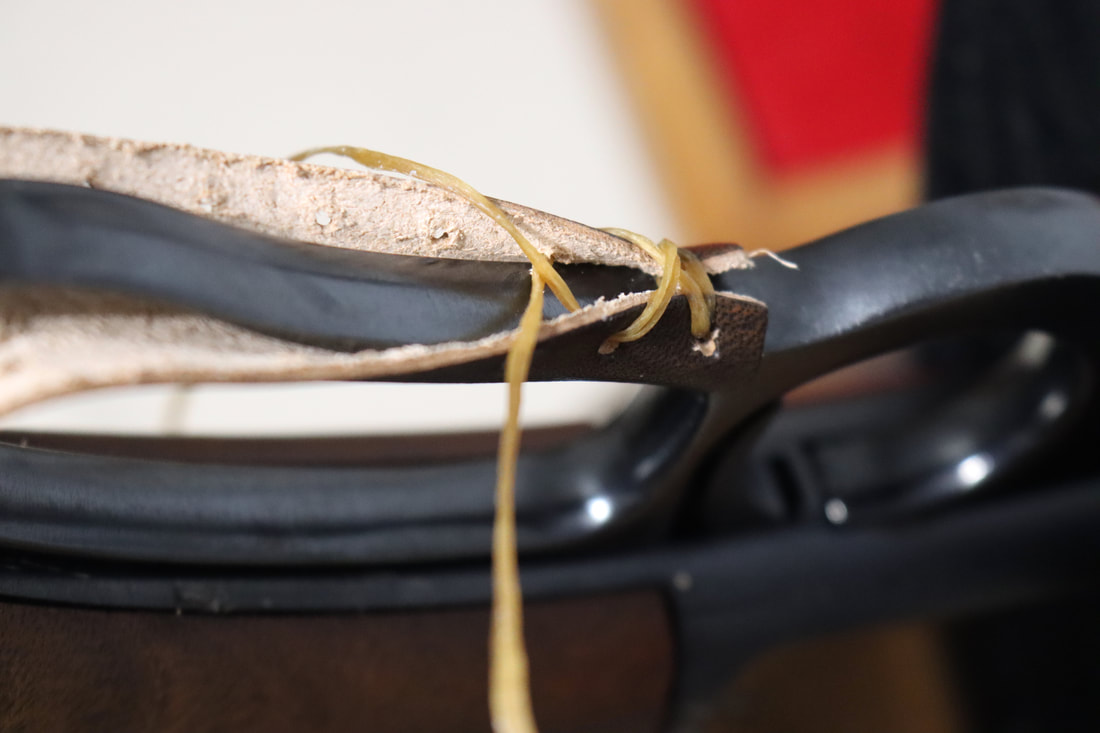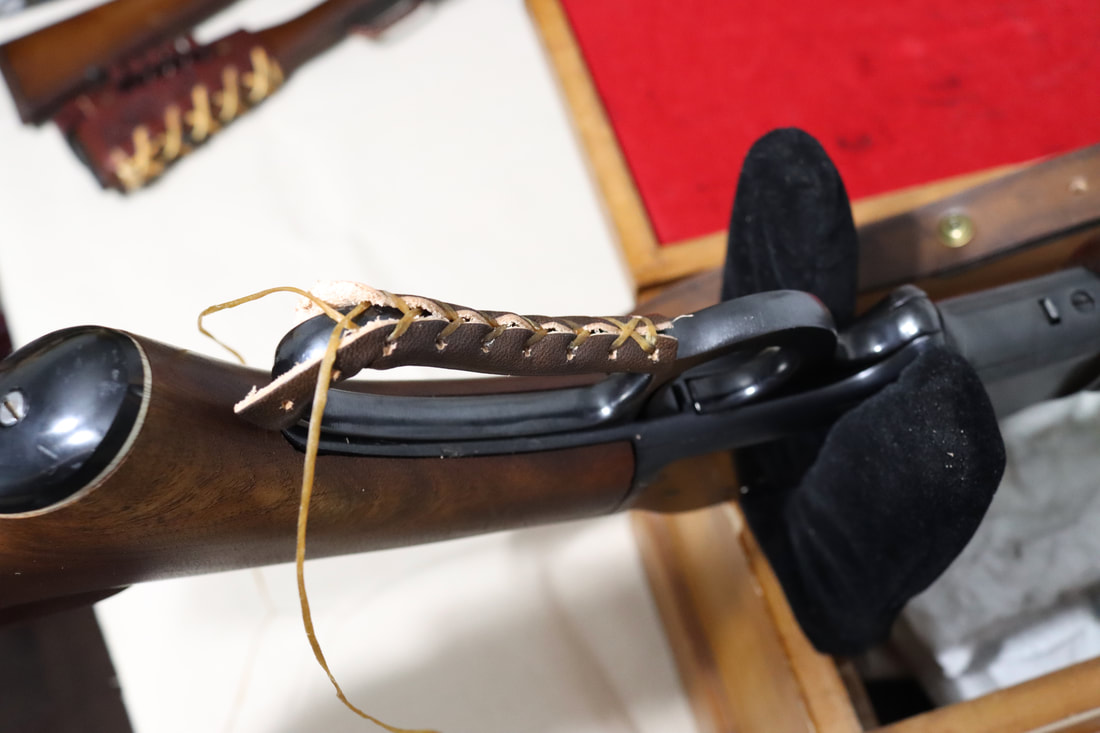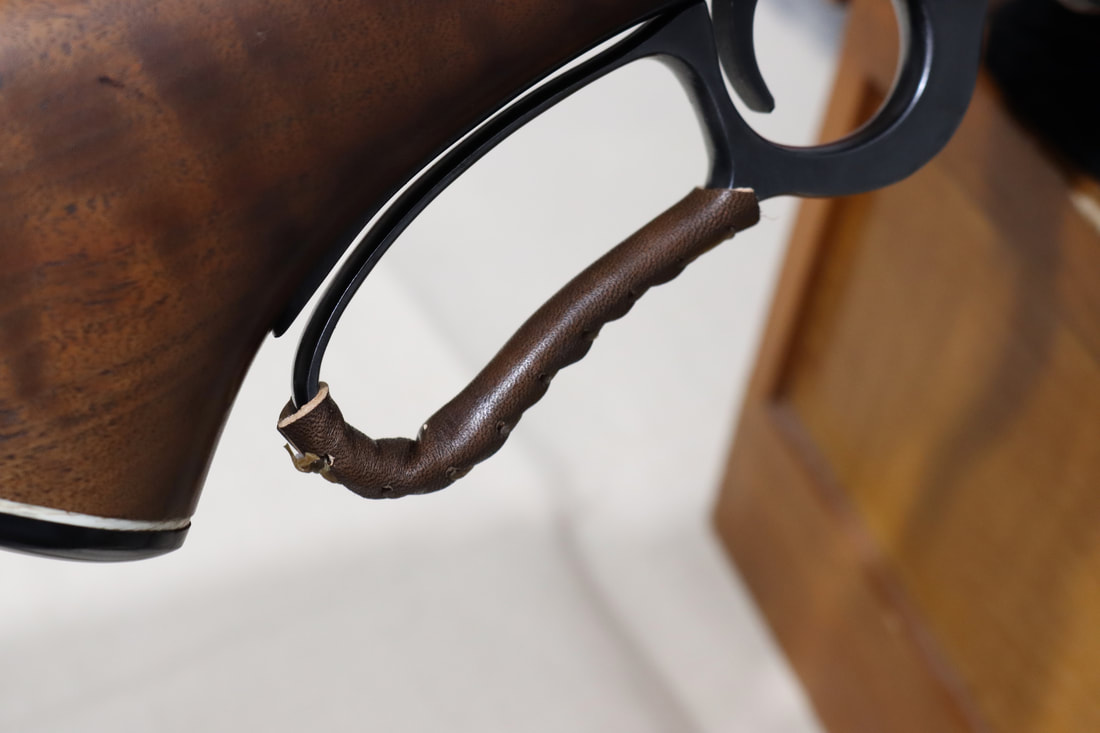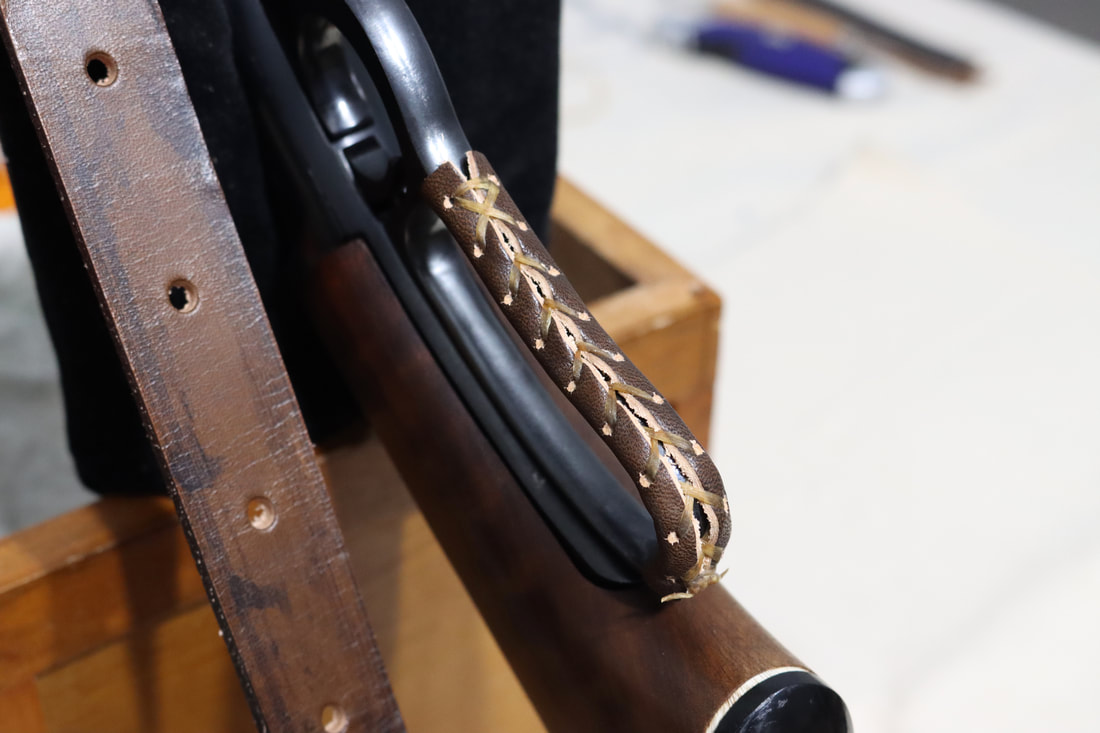- For Lever Wrap installation and Sling setup instructions, scroll down this page.
- For use and care instructions, please scroll to the bottom of this page.
Installation of your Cartridge Cuff:
Installation of your Lever Wrap:
Sling Setup Instructional Video:
Tips on use and care for your Mason Leather:
- You should not have to clean or condition your Cartridge Cuff, Rifle Sling or other leather gear very often, once a year or even less is normal. I recommend wiping dust off with a clean, soft cloth. Condition the leather occasionally and lightly ONLY WITH Fiebing's Mink Oil Paste (easily found online). Before shipping I thoroughly finish the leather with Fiebing's Mink Oil Paste and it requires no further application for quite some time.
- NEVER USE AUTOMOTIVE, UPHOLSTERY, OR SHOE PRODUCTS ON YOUR MASON LEATHER.
- Do not hunt in the rain with your Mason Leather or get it wet. If your leather gets wet, it can cause discoloration and the cartridge loops can stretch amongst other issues. Again, do not hunt in the rain with your Mason Leather or get it wet.
- Take cartridges out of loops when not in use, or when the day's hunt is over. If you store cartridges in the loops long-term the loops may eventually become looser.
- Loops are sized to hold straight-wall cartridges midway on the case, not pushed down to the rim. Loops are sized to hold bottleneck cartridges with the shoulder of the case at the bottom of the loop. Shoving cartridges down through the loops to the rim will stretch the loops.
- Somehow, I have managed to hunt with my own cartridge cuffs and slings for many, many years and they still look great, even better than new, while some people seem to destroy something as soon as they touch it. Mason Leather is durable, functional and beautiful if properly used and cared for. Proper construction is my responsibility, proper use and care is your responsibility.
- Replacements will not be made due to improper use and care.


